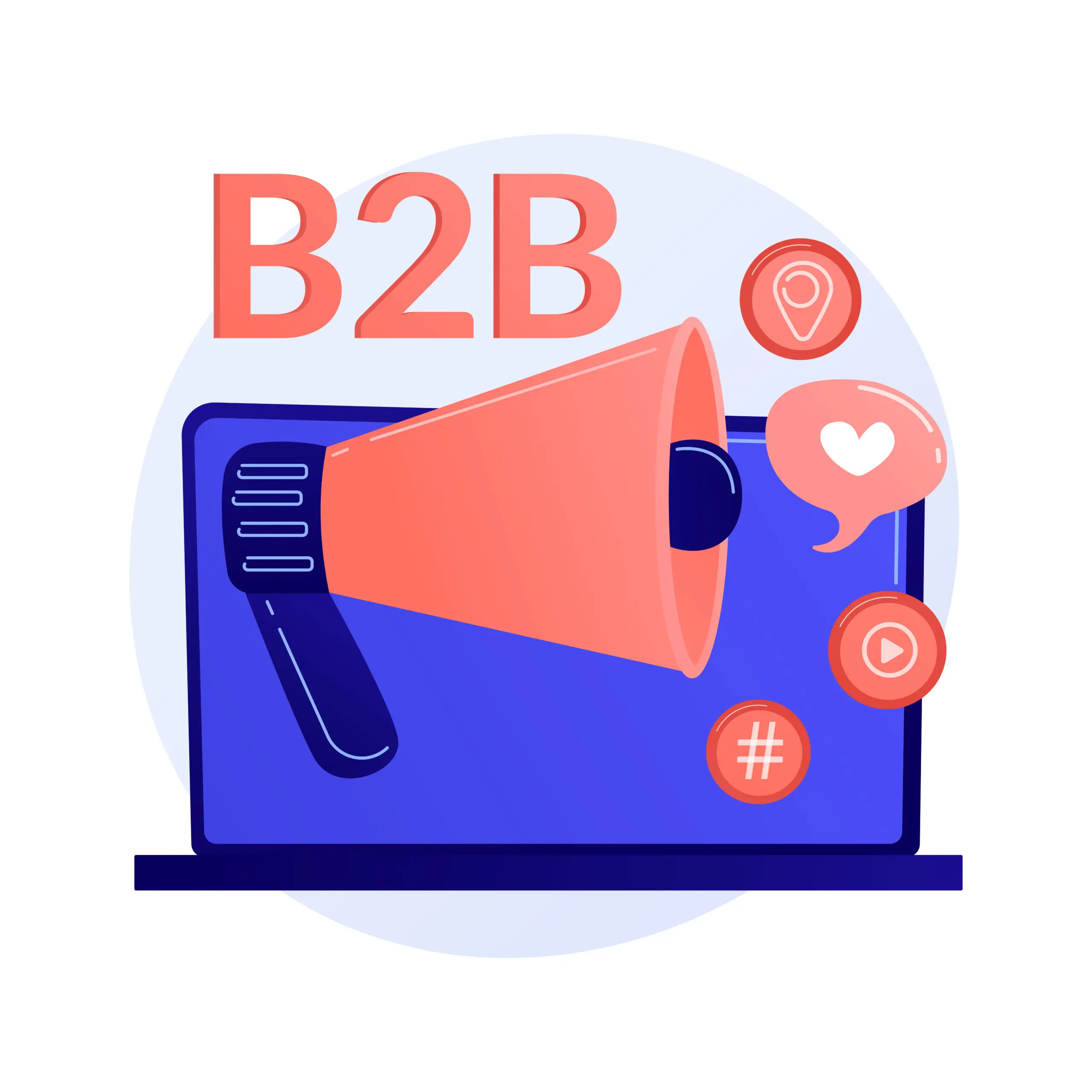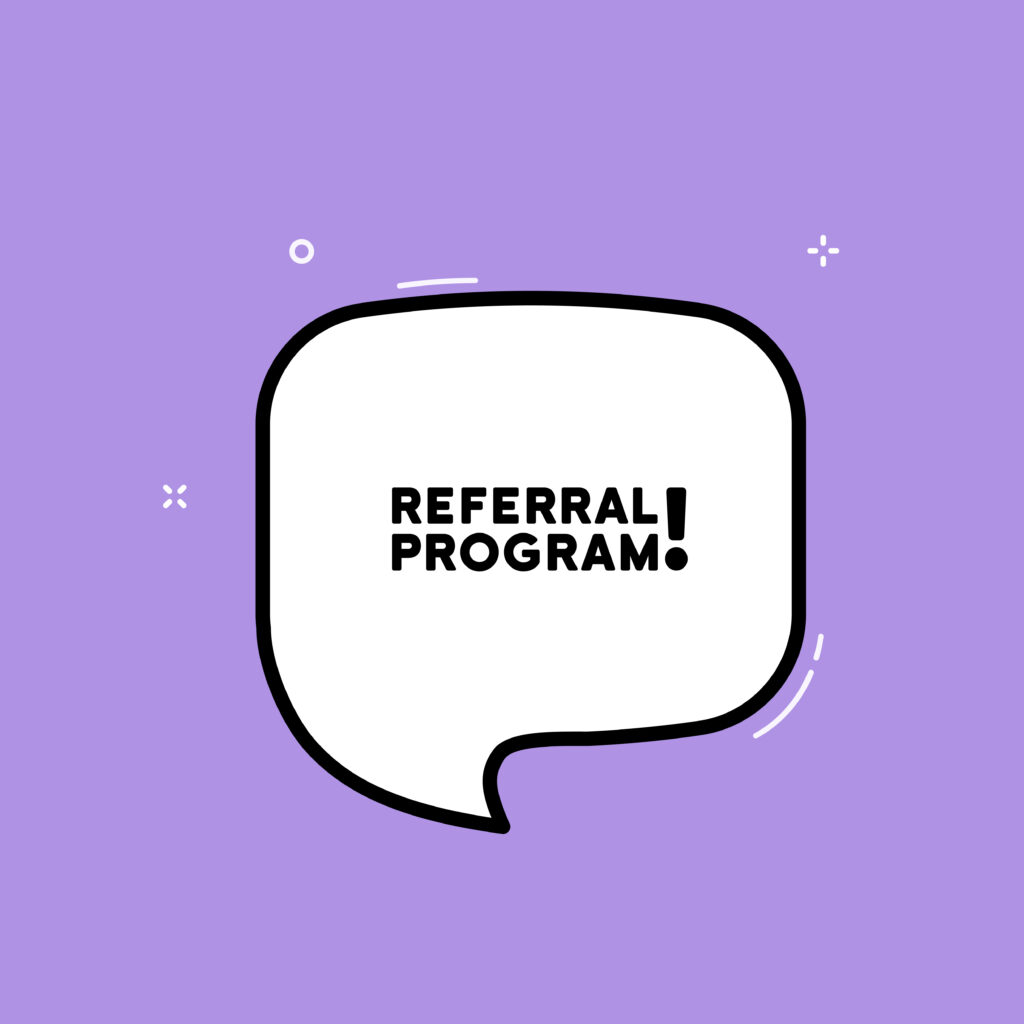For businesses aiming to expand and develop, it’s imperative to remain ahead of the game in today’s ever-changing B2B marketing landscape. This post will give you an edge in the ever-changing B2B marketing realm, by offering insights into current best practices.
We start by discussing how to define your target audience using buyer persona data and industry trends analysis. Then we look at content marketing channels such as social media and webinars for lead generation.
We investigate referral programs in B2B marketing. We also compare customer stories vs company case studies, highlighting the importance of trust and authority through thought leadership and influencer partnerships.
We will also look at adapting to privacy regulations like GDPR compliance while maintaining effective targeting tactics. These advanced B2B marketing techniques, your business can stay competitive and thrive in an increasingly complex marketplace.
Table of Contents:
- Defining Your Target Audience
- Content Testing Through Various Channels
- Referral Programs in B2B Marketing
- Embracing Change Within Organizations
- Leveraging Customer Stories Over Company Case Studies
- Building Trust and Authority in B2B Marketing
- Segmenting Customers Based on New Dimensions
- Adapting Sales Models to Technological Advancements
- Conclusion
Defining Your Target Audience
A strong B2B digital marketing strategy starts with defining your target audience. Utilizing demographic and psychographic data to identify individual prospects, create effective marketing plans, and define your brand positioning in the market is crucial for success. In this section, we will discuss how to use buyer persona data for better targeting and incorporating industry-specific demographics.
Using Buyer Persona Data for Better Targeting
To effectively reach prospective customers, it’s essential to develop detailed buyer personas. These fictional representations of your ideal customers can help you understand their needs, preferences, pain points, and motivations. By leveraging this information in your content marketing and marketing tactics such as email marketing or social media campaigns, you can tailor messages that resonate with potential buyers on a deeper level.
Incorporating Industry-Specific Demographics
- Age: Different age groups may have varying preferences when it comes to communication channels or product features. Consider these factors when crafting targeted messaging.
- Job Title: Catering content towards specific job titles like Chief Marketing Officer or sales teams ensures relevance within professional contexts.
- Sector/Industry: Understanding the unique challenges faced by companies within certain sectors enables marketers to offer tailored solutions that address those issues directly.
Taking the time to define your target audience using buyer persona data and industry-specific demographics will ensure more efficient lead generation efforts while providing valuable insights into what truly matters most during their buying journey. Incorporating content marketing, influencer marketing, and email marketing into your marketing strategies can also help you reach potential buyers and generate leads. Remember to always prioritize the protection of personal data when implementing these tactics.
Identifying the ideal customer base is critical to guarantee that your B2B advertising campaigns are being seen by the correct people. By utilizing buyer persona data and industry-specific demographics, you can hone in on who will be most receptive to your message. Next, we’ll explore content testing through various channels for optimal results.
Content Testing Through Various Channels
To ensure your content resonates with the target audience, it’s important to test through multiple channels. According to HubSpot’s Blog Research, 25% of marketers plan to stop leveraging podcasts and audio content. Therefore, it’s crucial for businesses to explore alternative platforms.
Social Media Platform Comparisons for B2B Marketing
- LinkedIn: As a professional networking site, LinkedIn is an ideal channel for sharing industry insights and connecting with potential buyers.
- Twitter: This fast-paced platform allows you to share bite-sized updates on company news or engage in conversations with prospective customers.
- Facebook: While primarily used by B2C companies, Facebook can still be valuable for showcasing company culture and hosting live events such as webinars.
Webinar Strategies for Lead Generation
Develop an engaging presentation that meets your target audience’s needs and interests, then promote the upcoming webinar through email marketing campaigns and social media posts to maximize lead generation.
- Create engaging presentations that provide value-added information relevant to your target audience’s needs and interests.
- Promote upcoming webinars through email marketing campaigns and social media posts well in advance of the event date.
Incorporating these tactics into your overall marketing plan, along with other proven methods like influencer marketing and content marketing, will help you reach more potential buyers while staying ahead in today’s competitive business landscape. It’s important to note that personal data analysis should be done ethically and with the consent of your audience.
Content testing through various channels is an essential step in B2B marketing as it allows you to identify the most effective platforms for your target audience. Exploring how to successfully incorporate referral programs is a great way to enhance engagement and bring in new customers.
Referral Programs in B2B Marketing
Implementing referral programs, like Blackbaud’s, can encourage customers to refer other potential clients and create a network effect within the industry. This approach significantly boosts customer acquisition rates while reducing costs associated with traditional advertising methods.
Designing an Effective Referral Program Structure
To design a successful referral program, start by identifying your target audience and their needs. Next, determine what incentives will motivate them to make referrals – this could be rewards or discounts on products/services. Finally, establish clear guidelines for participation and ensure that the process is simple for both referrers and referred customers.
Incentivizing Referrals Through Rewards or Discounts
- Rewards: Offer exclusive rewards such as gift cards, access to premium features of your product/service, or even company swag as an incentive for referring new business.
- Discounts: Provide discounts on future purchases or services when existing customers successfully refer new clients. This not only incentivizes referrals but also encourages repeat business from loyal customers.
Promote your referral program through various marketing channels like email marketing campaigns, social media posts, and blog articles highlighting success stories from satisfied referrers. By leveraging these strategies effectively in conjunction with a well-designed referral program structure and attractive incentives, you can tap into the power of word-of-mouth marketing to grow your B2B client base exponentially.
Referral programs in B2B marketing can be a powerful tool to drive customer acquisition and growth. By embracing change within organizations, businesses can create an environment that encourages innovation and fosters continuous improvement.
Embracing Change Within Organizations
In today’s competitive business landscape, adaptability is a crucial trait for any organization to possess. Loredana Niculae, CEO of NNC Services, emphasizes the importance of embracing change as part of a marketer’s role in driving growth and success. Businesses must strive to remain at the forefront of their industry by cultivating an atmosphere that promotes creative thinking and continual advancement.
Encouraging Innovation Among Team Members
To foster an innovative environment, empower team members to share ideas and take risks through open communication such as brainstorming sessions or suggestion boxes. Encourage open communication by hosting brainstorming sessions or implementing suggestion boxes. Additionally, recognize employees who contribute innovative ideas through rewards or public acknowledgment.
Fostering a Culture of Continuous Improvement
- Set clear goals: Establish measurable objectives for your marketing strategies that align with overall business goals.
- Analyze data: Regularly review key performance indicators (KPIs) such as lead generation rates or email marketing engagement metrics to identify areas for improvement.
- Educate employees: Provide ongoing training opportunities on new marketing tactics and technologies so your team stays up-to-date with industry trends.
- Promote collaboration: Encourage cross-functional teams to work together on projects that require diverse skill sets, promoting knowledge sharing across departments.
Taking these steps will help foster an adaptable mindset among team members while ensuring your organization remains at the forefront of B2B marketing practices. As a marketer, it’s important to stay up-to-date with the latest marketing strategies and tactics, including content marketing, social media, influencer marketing, and email marketing. By developing a comprehensive marketing plan that incorporates these tactics, you can effectively reach prospective customers and potential buyers.
It’s also important to work closely with your sales teams to ensure that your marketing strategies align with their efforts to generate leads and close deals. By collaborating with your chief marketing officer and sales leaders, you can develop a cohesive marketing strategy that supports your overall business goals.
Finally, it’s crucial to prioritize the protection of personal data in all of your marketing efforts. By implementing strong data privacy policies and complying with regulations such as GDPR, you can build trust with your audience and protect your brand reputation.
Organizations that embrace transformation can cultivate a milieu which stimulates creativity and propels an ethos of perpetual advancement. Leveraging customer stories over company case studies is another way to drive growth as it allows businesses to capture impactful customer testimonials which can be integrated into marketing materials.
Leveraging Customer Stories Over Company Case Studies
In the realm of B2B marketing, customer stories are more powerful than company-edited case studies when it comes to understanding buyer behavior. These authentic experiences provide valuable insights into what truly matters most during their buying journey. By incorporating customer stories into your content strategy, you can create a stronger connection with prospective customers and showcase the real impact of your products or services.
Collecting Impactful Customer Testimonials
- Request feedback from satisfied clients via email or social media channels.
- Conduct interviews with long-term customers to gain in-depth insights on their experience working with your business.
- Create surveys for potential buyers to share their thoughts and opinions about your offerings.
Integrating Customer Stories into Marketing Materials
To effectively leverage these testimonials, integrate them across various marketing tactics:
- Email Marketing: Share compelling quotes from happy clients within newsletters or promotional emails to demonstrate credibility and build trust among potential buyers.
- Social Media: Utilize platforms like LinkedIn, Twitter, and Facebook to post client success stories that highlight how your solutions have helped businesses achieve growth and overcome challenges in their industry.
By leveraging customer stories over company case studies, businesses can build trust and credibility with their target audience. Building on this concept of trust, the next heading focuses on building authority in B2B marketing through content creation and engaging prospects on social media.
Building Trust and Authority in B2B Marketing
To establish credibility within your industry, enable platforms for customers’ self-expression while maintaining high-quality information throughout their entire buying journey.
Showcasing Thought Leadership Through Content Creation
To build trust with prospective customers, focus on creating valuable content that showcases your expertise. This can include thought leadership articles, whitepapers, or informative webinars. By sharing insights and actionable advice, you demonstrate your company’s knowledge and position yourself as an industry leader.
Engaging With Prospects on Social Media
Utilizing social media platforms can be a great way to reach out to prospective customers and create an impactful online presence. Regularly engage with users by responding to comments, answering questions, or even participating in relevant discussions within industry groups. According to HubSpot, 90% of marketers claim that social media has increased exposure for their businesses.
- Email marketing: Use personalized email campaigns to share helpful resources or updates about your products/services with subscribers who have opted-in to receive communications from you.
- Influencer marketing: Partnering with respected influencers within your niche can help boost brand awareness while also lending credibility through association.
- Content marketing strategy: Develop a strategic plan outlining the types of content you will create, the channels you will use to distribute it, and how you will measure its effectiveness in driving leads and sales.
By focusing on these marketing tactics, businesses can build trust with potential buyers while establishing themselves as authoritative figures within their industries. This can lead to increased lead generation and sales, making it a crucial aspect of any marketing plan. Additionally, it is important to ensure that personal data is handled responsibly and in compliance with relevant regulations, such as GDPR, to further establish trust with potential buyers and protect their privacy.
By leveraging thought leadership and engaging with prospects on social media, B2B marketers can build trust and authority in their target audience. To further capitalize on these efforts, it is important to segment customers based on new dimensions such as the millennial mindset and evolving privacy regulations.
Segmenting Customers Based on New Dimensions
In today’s fast-paced business environment, segmenting customers based on new dimensions is essential for success in B2B marketing. With millennials taking over key management positions and privacy regulations potentially making accessing vital marketing data more difficult than before, it becomes crucial to adapt your strategies accordingly.
Understanding the Millennial Mindset in Decision-Making
Millennials are transforming the manner in which companies make decisions, concentrating on cooperation, invention and sustainability. To effectively reach this demographic, consider incorporating content that highlights these values into your content marketing strategy. Additionally, leverage social media platforms where millennials spend their time to engage them with tailored messaging.
Adapting to Evolving Privacy Regulations
The introduction of privacy regulations like GDPR has made handling personal data more challenging for marketers. To stay compliant while still reaching potential buyers through email marketing, ensure you have explicit consent from prospective customers before sending any promotional materials. Furthermore, be transparent about how you collect and use their information by providing clear explanations within your privacy policy.
Taking these factors into account when segmenting your audience will help create targeted marketing campaigns that resonate with both millennial decision-makers and those concerned about data privacy – ultimately leading to better engagement rates and higher conversions.
Segmenting customers based on new dimensions can help businesses better understand the needs of their target audience and tailor marketing strategies accordingly. By adapting sales models to technological advancements, companies are able to capitalize on digital channels and AI-driven tools for lead generation.
Adapting Sales Models to Technological Advancements
As technology advances rapidly, changing how people interact with each other digitally, traditional sales models are becoming obsolete. This forces companies to adapt accordingly or risk losing out on opportunities altogether due to a lack of proper adaptation measures put in place beforehand.
Incorporating Digital Channels into Sales Strategies
To stay competitive in today’s market, businesses must embrace digital sales channels. These include social media platforms, email marketing campaigns, and even AI-driven chatbots that can engage with potential buyers 24/7. By incorporating digital sales channels into your approach, you can access prospective customers more rapidly and accurately than ever before.
Utilizing AI-driven Tools for Lead Generation
AI is transforming the means by which B2B marketers acquire leads, with automation of data examination and content production. With the help of advanced algorithms and machine learning technologies, businesses can now identify their ideal customer profiles faster while also personalizing their messaging based on individual preferences. Some popular AI-powered solutions include predictive analytics software for identifying high-potential prospects or natural language processing engines that create engaging copy tailored specifically towards targeted audiences.
Influencer marketing, content marketing, and email marketing are also effective marketing tactics that can be incorporated into your marketing plan. By utilizing these marketing strategies, businesses can reach potential buyers and generate leads more effectively.
It’s important to note that while technology can help businesses reach their target audience, it’s also important to respect personal data and privacy. As a chief marketing officer, it’s your responsibility to ensure that your sales teams are following ethical practices when it comes to collecting and using personal data.
In conclusion, adapting sales models to technological advancements is crucial for businesses to stay competitive in today’s market. By incorporating digital channels into sales strategies and utilizing AI-driven tools for lead generation, businesses can reach potential buyers more effectively and efficiently. It’s also important to follow ethical practices when it comes to collecting and using personal data.
Conclusion
B2B marketing requires a strategic approach that incorporates buyer persona data, analysis of industry trends, and personalized content across different channels. Referral programs, customer stories, thought leadership building, and adapting to privacy regulations are also crucial for success.
By embracing change within organizations and evolving sales models through automation tools and digital-first strategies, businesses can effectively nurture leads while building trust and authority with their target audience.
If you’re looking to learn more about B2B marketing best practices from industry experts, join us at the Growth Marketing Conference.



